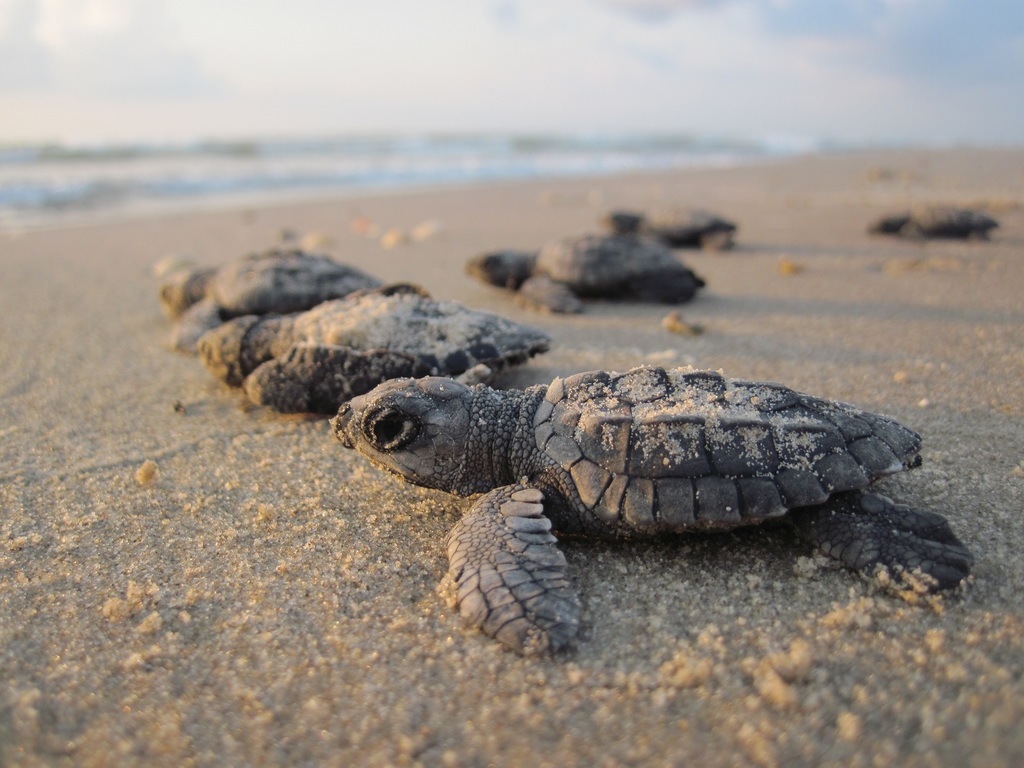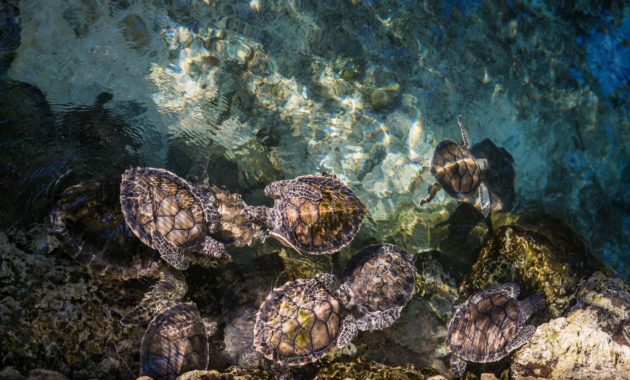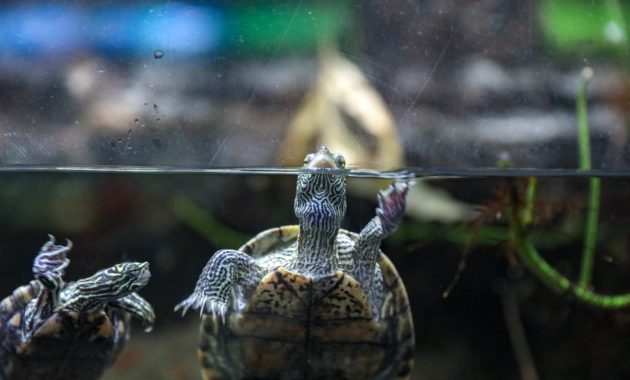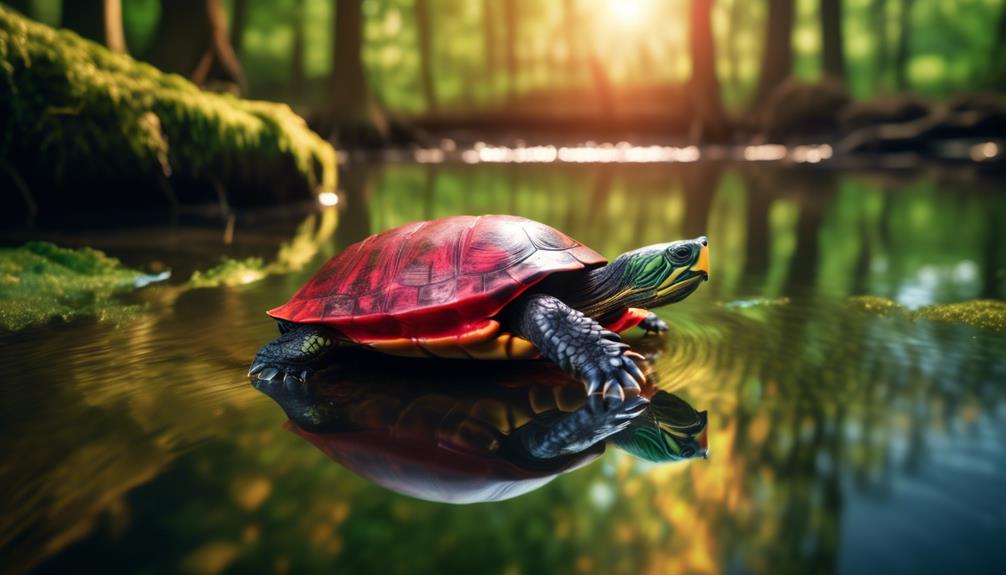
As you stroll along the banks of the Mobile-Tensaw River Delta, you can't help but notice the hushed whispers and awestruck expressions on the faces of the locals. What could have possibly stunned them so?
Well, it seems that an elusive creature, known as the Alabama Red-Bellied Turtle, has made a rare appearance. The sightings have sparked curiosity and intrigue, leaving everyone wondering about the secrets this captivating turtle holds.
But what makes this turtle so special? And why has it chosen this moment to reveal itself?
Prepare to be enthralled as we delve into the mysteries surrounding the Alabama Red-Bellied Turtle and uncover the astonishing truth behind its stunning presence.
Key Takeaways
- The Alabama Red-Bellied Turtle is a medium-sized turtle found exclusively in the Mobile-Tensaw River Delta in Alabama.
- It has distinctive physical features, including tooth-like cusps on its upper jaw and elongated foreclaws in males.
- The turtle's habitat consists of shallow backwaters of bays, bayous, rivers, and streams with freshwater and vegetation.
- The species faces threats such as habitat loss, pollution, and competition from invasive species, making conservation efforts crucial for its survival.
Size and Physical Description
The Alabama Red-Bellied Turtle is a medium-sized turtle found in the Mobile-Tensaw River Delta in Alabama. It boasts a distinctive physical description and size. With an average lifespan of 50 years, this turtle stands out with its unique features. Its upper jaw has a notch with tooth-like cusps on either side, while males have elongated foreclaws.
The carapace color can range from black or dark brown to greenish, adorned with vertical red, orange, or yellow markings along the sides. Additionally, the plastron color varies from red to pale yellow, with or without dark markings. These physical attributes make the Alabama Red-Bellied Turtle a visually captivating species.
Its medium size, coupled with its striking color patterns, contributes to its allure and makes it a fascinating creature to observe in its native habitat.
Lifespan and Reproduction
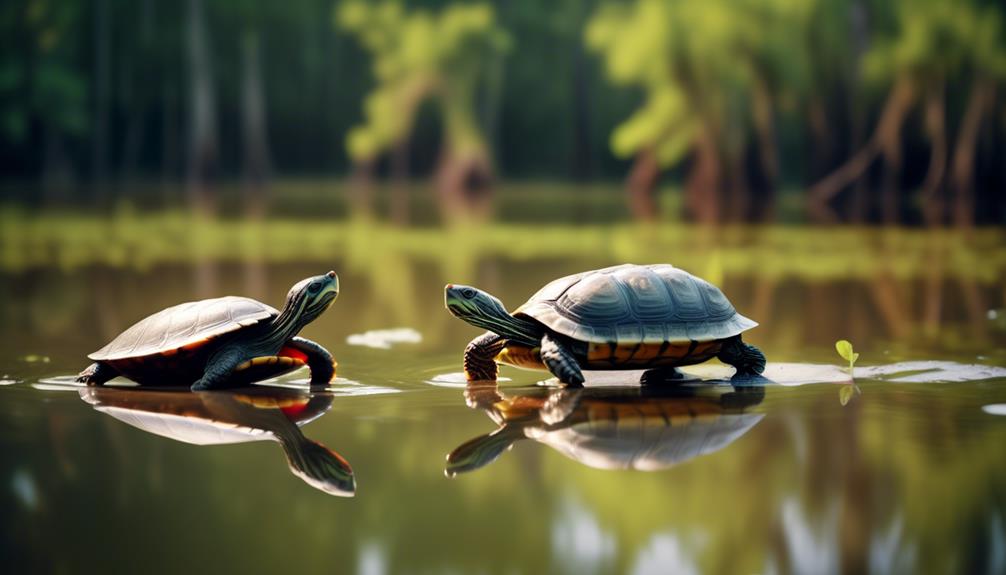
To understand the lifespan and reproduction of the Alabama Red-Bellied Turtle, it is important to delve into its unique biological characteristics. This medium-sized turtle has an average lifespan of 50 years. Males have elongated foreclaws, and the carapace color ranges from black or dark brown to greenish. The plastron color varies from red to pale yellow, with or without dark markings. When it comes to reproduction, female Alabama Red-Bellied Turtles lay their eggs in nests dug on land. They typically lay around 3-14 eggs per clutch. The incubation period lasts for about 70-90 days, after which the hatchlings emerge. Once they hatch, they make their way to the water, where they begin their journey of survival. It is fascinating to witness the life cycle of these elusive creatures.
| Lifespan | Reproduction |
|---|---|
| 50 years | Eggs laid in nests dug on land |
| 3-14 eggs laid per clutch | |
| Incubation period of 70-90 days | |
| Hatchlings make their way to water |
Diet and Feeding Habits
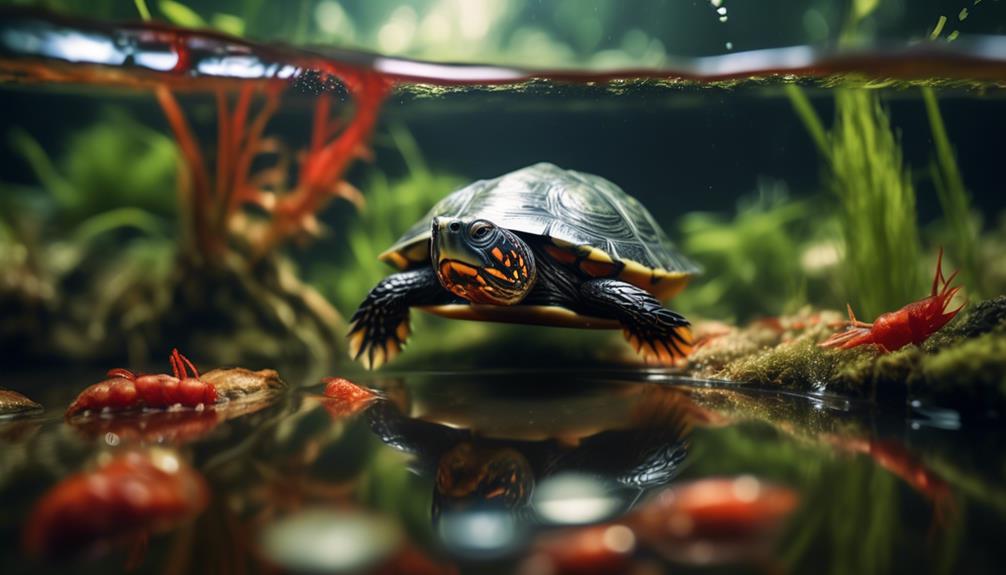
Feeding habits and dietary preferences of the Alabama Red-Bellied Turtle are essential factors to consider when caring for this remarkable species. These turtles have a varied diet that consists of both commercial pelleted diet for turtles and natural foods. They're known to consume leafy greens and non-toxic aquatic plants. It's important to provide them with a balanced diet to ensure their overall health and well-being.
In addition to their dietary needs, the Alabama Red-Bellied Turtle requires a clean and well-filtered water environment. This is crucial for maintaining their overall health and preventing any potential health issues.
Habitat and Geographic Distribution
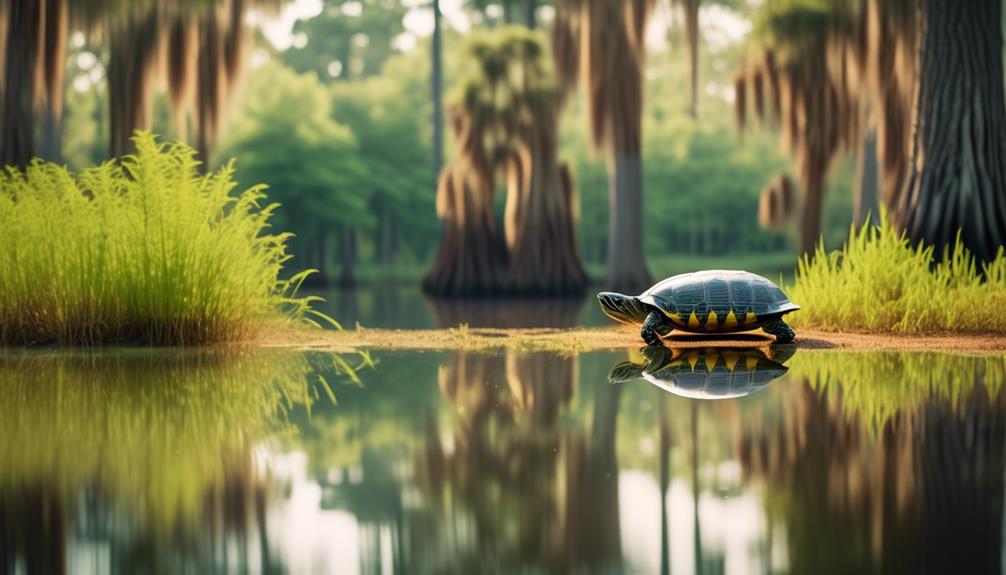
With its unique range of colors and distinctive physical features, the Alabama Red-Bellied Turtle stands out among its fellow reptiles in the Mobile-Tensaw River Delta. This elusive turtle is native to the delta, which is located in Alabama.
It prefers to inhabit shallow backwaters of bays, bayous, rivers, and streams that have freshwater and vegetation. These turtles thrive in bodies of water with soft bottoms, where they can find food and seek refuge. Their habitat is characterized by a mosaic of wetlands and waterways, providing them with ample opportunities for foraging and basking.
The geographic distribution of the Alabama Red-Bellied Turtle is limited to the Mobile-Tensaw River Delta, making it a true gem of this region. Locals are fortunate to have such a unique species in their midst.
Behavior and Adaptations

The Alabama Red-Bellied Turtle exhibits fascinating behavior and unique adaptations that contribute to its survival in its native habitat.
- Nocturnal Behavior: This turtle is primarily active at night, utilizing the cover of darkness to forage for food and avoid predators.
- Burrowing Adaptation: The Alabama Red-Bellied Turtle has a remarkable ability to burrow into the soft bottoms of bodies of water, creating a safe space for nesting and hibernation.
- Aquatic Adaptation: With its webbed feet and streamlined shell, this turtle is well-adapted for life in the water. It can swim gracefully and efficiently, allowing it to navigate through its aquatic habitat with ease.
These behaviors and adaptations enable the Alabama Red-Bellied Turtle to thrive in its habitat, ensuring its survival for generations to come.
Conservation Status and Threats
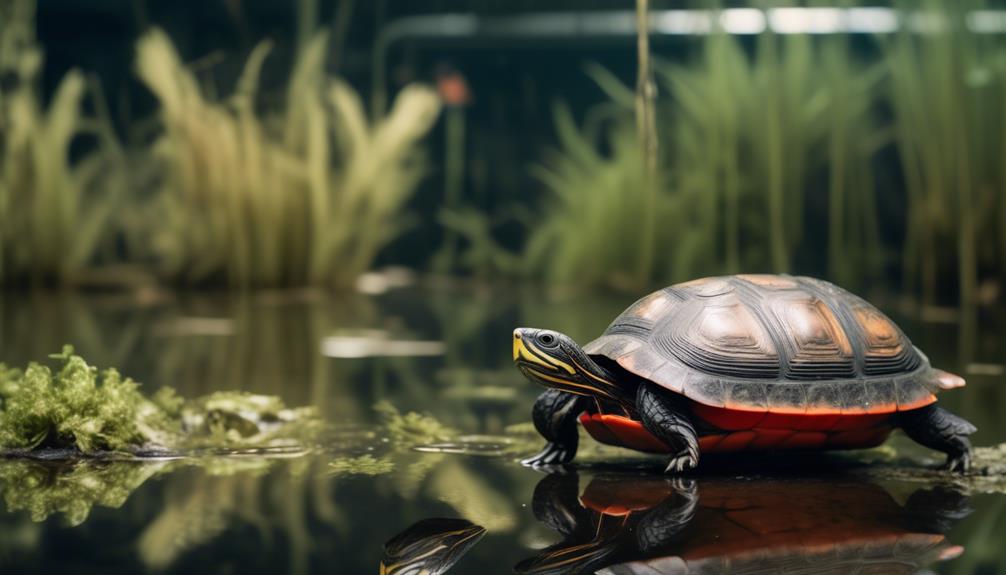
To assess the conservation status and threats facing the Alabama Red-Bellied Turtle, it's crucial to examine various factors that impact its population and habitat.
The Alabama Red-Bellied Turtle is currently listed as a species of concern by the U.S. Fish and Wildlife Service.
One of the major threats to its population is habitat loss and degradation due to urbanization and agriculture. The destruction of its preferred freshwater habitats and vegetation can significantly impact its ability to find food and reproduce.
Additionally, pollution from agricultural runoff and industrial activities can contaminate the water, making it unsuitable for the turtle's survival.
Invasive species, such as the red-eared slider turtle, also pose a threat by competing for resources and potentially transmitting diseases.
Conservation efforts, including habitat preservation and restoration, are essential to ensure the long-term survival of this elusive turtle species.
Interactions With Local Communities
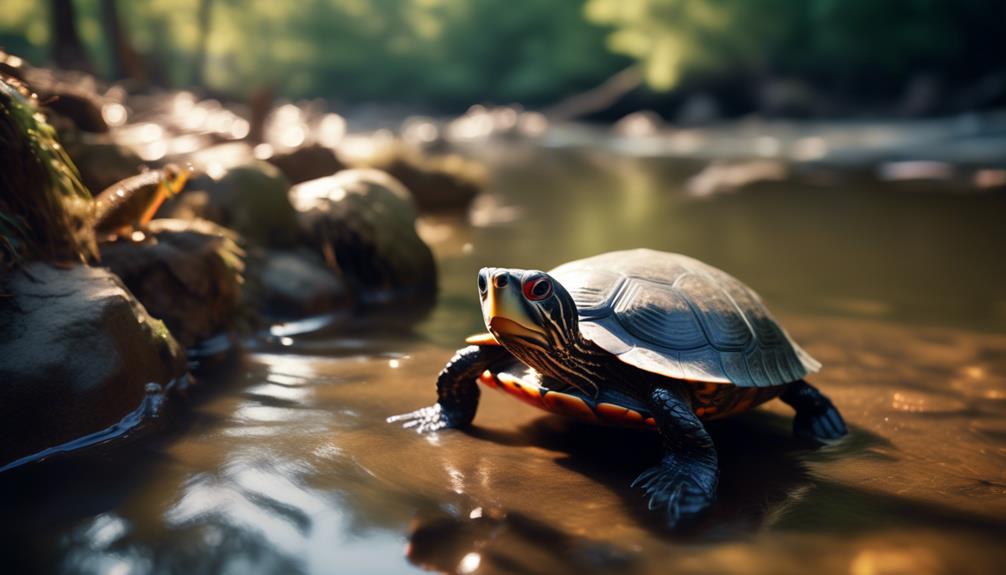
Local communities are actively involved in the conservation and protection of the Alabama Red-Bellied Turtle. They understand the importance of preserving this elusive species and have taken various measures to ensure its survival.
- Community education programs: Local communities organize educational initiatives to raise awareness about the Alabama Red-Bellied Turtle. These programs aim to inform residents about the turtle's habitat, diet, and conservation status, promoting a deeper understanding and appreciation for the species.
- Habitat restoration projects: Communities work together to restore and maintain the turtle's natural habitat. They engage in activities such as planting native vegetation, removing invasive species, and creating nesting sites to provide a suitable environment for the turtles to thrive.
- Reporting and monitoring: Local residents play a crucial role in reporting sightings of the Alabama Red-Bellied Turtle. They actively participate in monitoring efforts, providing valuable data to researchers and conservation organizations. This information helps experts track population trends and implement effective conservation strategies.
Through these collaborative efforts, local communities contribute significantly to the protection and preservation of the Alabama Red-Bellied Turtle. Their dedication and involvement are vital in ensuring the long-term survival of this remarkable species.
Frequently Asked Questions
What Is the Average Size of the Alabama Red-Bellied Turtle?
The average size of the Alabama Red-Bellied Turtle is medium-sized. It has a lifespan of about 50 years. Its upper jaw has tooth-like cusps, and males have elongated foreclaws.
How Do Alabama Red-Bellied Turtles Reproduce and What Is Their Reproductive Lifespan?
Alabama Red-Bellied Turtles reproduce through internal fertilization. Mating occurs in water, and females lay eggs on land. Their reproductive lifespan can last several decades, with females typically laying clutches of eggs every few years.
What Are the Specific Feeding Habits of the Alabama Red-Bellied Turtle?
The Alabama Red-Bellied Turtle eats a commercial pelleted diet, leafy greens, and non-toxic aquatic plants. Take care to provide a clean, well-filtered water environment. This species has specific feeding habits that must be met.
Where Else Can the Alabama Red-Bellied Turtle Be Found Besides the Mobile-Tensaw River Delta?
The Alabama Red-Bellied Turtle can be found in other rivers and streams in Alabama, but it is mainly found in the Mobile-Tensaw River Delta. Keep exploring to learn more about its elusive nature.
Are There Any Unique Behaviors or Adaptations That the Alabama Red-Bellied Turtle Possesses?
The Alabama Red-Bellied Turtle possesses unique behaviors and adaptations. It has elongated foreclaws in males and tooth-like cusps on its upper jaw. Its carapace color ranges from black to greenish with red, orange, or yellow markings along the sides.
What Makes the Alabama Red-Bellied Turtle Elusive and Endangered?
The Alabama Red-Bellied Turtle is elusive due to its shy nature and preference for secluded habitats. However, its population has also been threatened by habitat loss and pollution, making it endangered. Conservation efforts are crucial to protect these endangered bog turtles breed from further decline.
Conclusion
In conclusion, the Alabama Red-Bellied Turtle is a captivating creature that has amazed locals with its stunning presence. With its unique physical description and eye-catching markings, this medium-sized turtle has truly captivated the hearts of those who encounter it.
Its diet and care, as well as its native habitat in the Mobile-Tensaw River Delta, further add to its allure. The turtle's diet consists mainly of aquatic plants, insects, and small invertebrates, making it an interesting species to study and observe. Its habitat in the Mobile-Tensaw River Delta, a diverse and ecologically important area, provides the perfect environment for this turtle to thrive.
However, the conservation status and threats faced by this turtle remind us of the importance of preserving its habitat and ensuring its survival for future generations to appreciate its wonders. The Alabama Red-Bellied Turtle is currently listed as a species of concern, mainly due to habitat loss, pollution, and the introduction of non-native species. Efforts are being made to protect and restore its habitat, as well as educate the public about the importance of conservation.
In conclusion, the Alabama Red-Bellied Turtle is a truly remarkable creature that deserves our attention and protection. Its unique physical characteristics, habitat, and conservation status all contribute to its captivating nature. By preserving its habitat and raising awareness about its importance, we can ensure that this fascinating turtle continues to thrive for generations to come.

